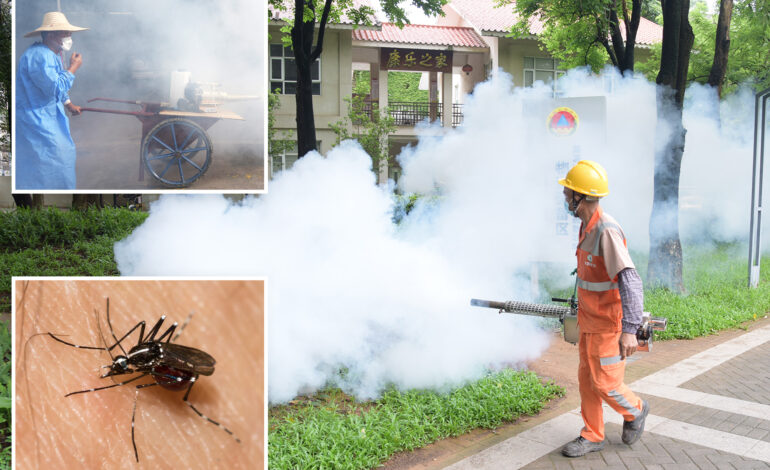China Battles Chikungunya Outbreak as 8,000 Infected

A significant outbreak of the mosquito-borne chikungunya virus has swept through southern China, infecting approximately 8,000 people within a month. Most cases have been reported in Guangdong province, particularly in the city of Foshan, which has emerged as the epicenter of the epidemic. The rapid increase in cases has raised alarms, prompting comparisons to the COVID-19 pandemic and leading to urgent public health measures.
In response to the crisis, the Chinese government has implemented extensive control measures reminiscent of those seen during the height of COVID-19. This includes the deployment of masked soldiers to spray insecticides in public areas and the introduction of genetically modified “elephant mosquitoes” which consume the larvae of smaller, disease-carrying mosquitoes. Additionally, thousands of mosquito-eating fish have been released into public ponds in Foshan to combat the outbreak.
Chikungunya is transmitted through the bites of infected Aedes mosquitoes and is characterized by symptoms such as fever, severe joint pain, headaches, muscle pain, swelling, and rashes. Although it is rarely fatal, the lack of a cure and the intensity of symptoms can lead to significant discomfort for those affected. According to the Centers for Disease Control and Prevention (CDC), most hospitalized patients have been discharged within seven days.
The situation escalated quickly, with over 3,000 new cases reported in just the past week, according to the BBC. Chinese health officials are on high alert, particularly since the first case was confirmed in Hong Kong on March 24, 2025. Infected individuals are being placed in “quarantine wards” equipped with mosquito nets, and authorities are urging residents to eliminate any stagnant water around their homes to reduce mosquito breeding grounds. Those who fail to comply face hefty fines of up to $1,400.
Ren Chao, a professor at the University of Hong Kong studying the impacts of climate change on chikungunya, emphasized the ease with which infected mosquitoes can thrive. He noted that they reproduce in even the smallest pools of water, such as bottle caps.
On March 28, 2025, the CDC issued a Level 2 travel notice for individuals planning to visit China, advising them to “practice enhanced precautions.” This classification is part of a four-tier warning system, with the highest level urging travelers to avoid all non-essential trips. The CDC also recommends that those traveling to the region consider vaccination, as there are two approved vaccines available in the United States.
The ongoing outbreak mirrors previous incidents in regions such as the Indian Ocean, where chikungunya has caused significant public health challenges. As authorities in Guangdong continue to enforce strict measures to control the virus, the situation remains fluid, and public health officials are closely monitoring developments.






